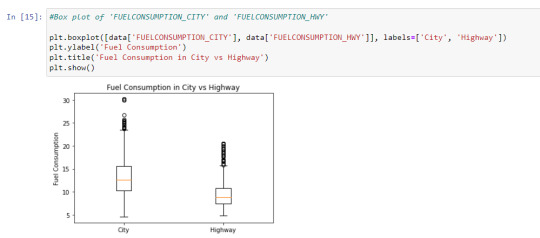Don't wanna be here? Send us removal request.
Text
Q-Q Plot:

Since the residuals are a key component of this plot, it helps us assess whether they follow a normal distribution. In this case, the Q-Q plot shows a relatively straight line, indicating that the residuals are normally distributed. However, if there would have been deviations from the line, it would have indicated potential issues with the normality assumption of the residuals.
Standardized Residuals Plot:

This plot provides insights into the distribution of residuals and helps us identify outliers and check for homoscedasticity. The plot shows a random scatter of points around the horizontal line at 0, indicating that the residuals have constant variance (homoscedasticity).
Leverage Plot:

The leverage plot helps us identify influential data points that have a strong impact on the regression model. Points that are high in leverage are those with extreme predictor values. In this plot, we look for points that have both high leverage and large residuals, as these points can significantly influence the regression coefficients. Identifying and understanding these influential points can help improve the robustness of the regression model.
0 notes
Text
Whether or not there was evidence of confounding for the association between your primary explanatory and response variable:
Based on the results of the multiple linear regression analysis, it appears that there is evidence of associations between the explanatory variables (engine size, number of cylinders, fuel consumption in city and highway) and the response variable (CO2 emissions).
Engine size (coefficient: 11.9990, p-value: 0.000)
Number of cylinders (coefficient: 7.6164, p-value: 0.000)
Fuel consumption in city (coefficient: 4.7424, p-value: 0.000)
Fuel consumption in highway (coefficient: 4.2957, p-value: 0.000)
All four explanatory variables have statistically significant p-values (less than 0.05), indicating that they are likely to be associated with CO2 emissions. The positive coefficients suggest that as these variables increase, CO2 emissions also tend to increase.

0 notes
Text
The association between the primary explanatory response variable:
The results of the multiple linear regression analysis supported the hypothesis that there is an association between the vehicle characteristics (engine size, number of cylinders, fuel consumption in city and highway) and the CO2 emissions. This is evidenced by the statistically significant coefficients for all the explanatory variables (engine size, cylinders, city fuel consumption, and highway fuel consumption), as indicated by their p-values being less than 0.05. The positive coefficients suggest that as these variables increase, so do the CO2 emissions, which aligns with the expectation based on the nature of these attributes.



0 notes
Text

The multiple linear regression analysis reveals several key findings regarding the associations between the explanatory variables (ENGINESIZE, CYLINDERS, FUELCONSUMPTION_CITY, and FUELCONSUMPTION_HWY) and the response variable (CO2EMISSIONS):
Coefficients:
For every one-unit increase in ENGINESIZE, there is an approximately 12 unit increase in CO2 emissions, holding other variables constant.
Similarly, for every one-unit increase in CYLINDERS, there is a 7.62 unit increase in CO2 emissions, holding other variables constant.
FUELCONSUMPTION_CITY and FUELCONSUMPTION_HWY also show positive associations with CO2 emissions, with coefficients of 4.74 and 4.30 respectively.
Statistical Significance (P-values):
All four explanatory variables have statistically significant p-values (p < 0.05), indicating that they are likely to be important predictors of CO2 emissions.
Overall Model Fit:
The overall model has a high R-squared value of 0.864, indicating that approximately 86.4% of the variance in CO2 emissions can be explained by the independent variables.
The adjusted R-squared value is 0.863, suggesting that the model's explanatory power is robust.
Other Statistical Results:
The Durbin-Watson statistic is 2.073, indicating that there is no significant autocorrelation in the residuals.
The Jarque-Bera (JB) statistic tests the assumption of normality of residuals and suggests that the residuals are not normally distributed (p < 0.001). However, this test can be sensitive to sample size, so further investigation may be warranted.
In summary, the results suggest that ENGINESIZE, CYLINDERS, FUELCONSUMPTION_CITY, and FUELCONSUMPTION_HWY are all significant predictors of CO2 emissions in the dataset. The model provides a good fit for the data, with strong associations between the explanatory variables and the response variable.
0 notes








